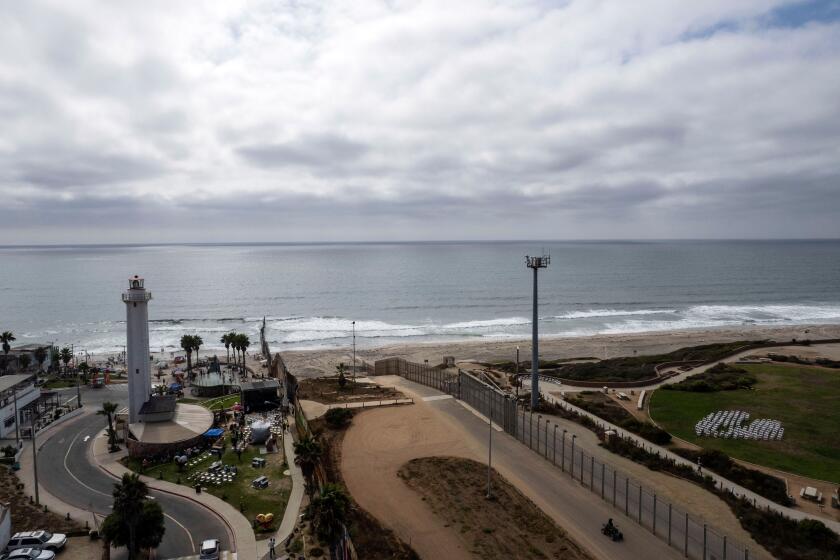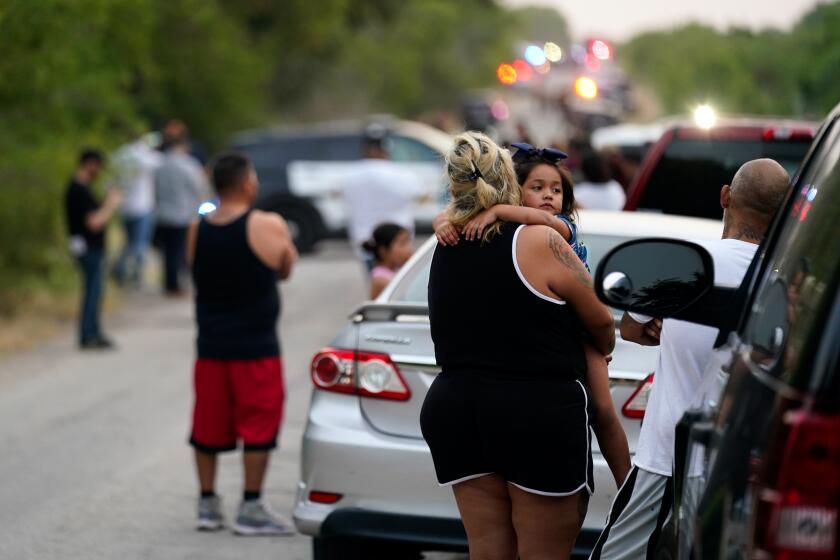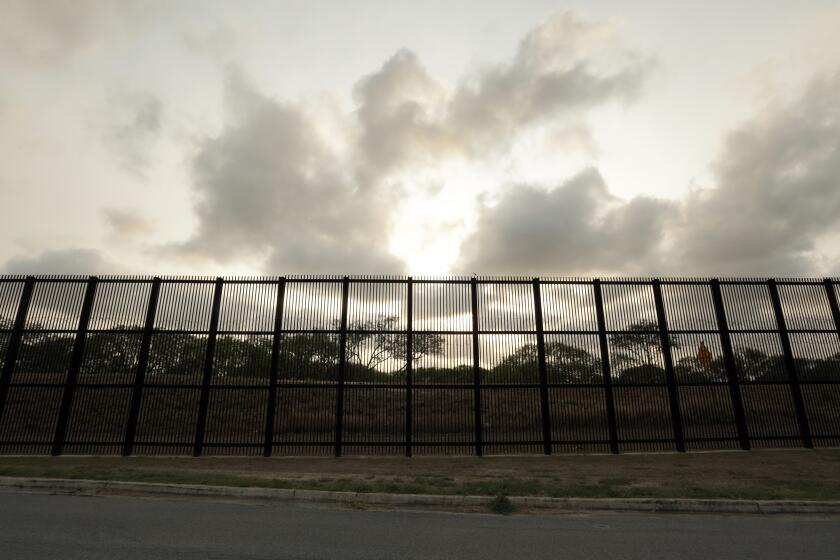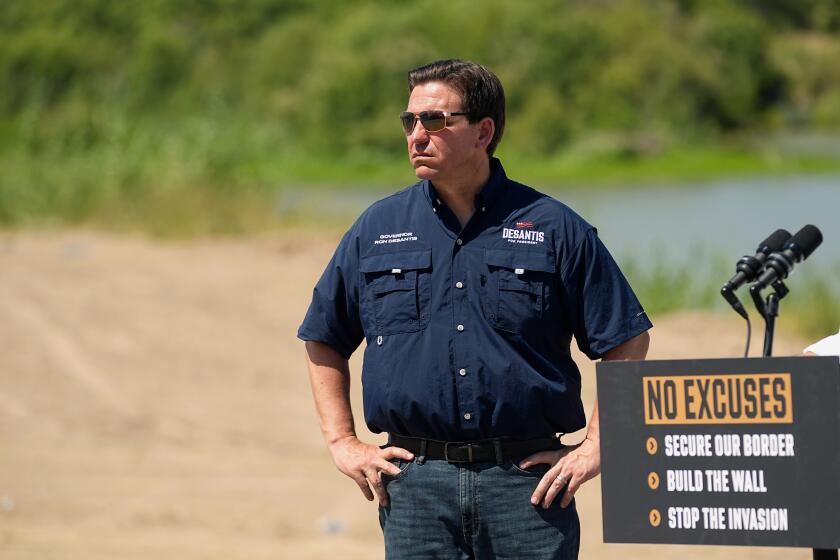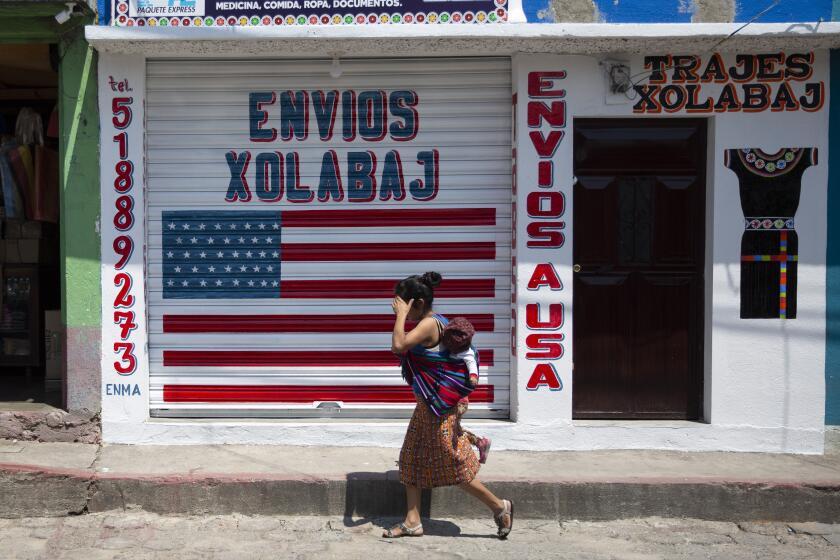
- Share via
Jose Federico Cervantes Arista was in trouble.
The smuggler had stood him up at the agreed pick-up spot in Ocotillo, a lonely desert crossroads on the southwestern edge of Imperial County, which was suffering record heat from climate change. The afternoon hit 111 degrees. He was about 10 miles north of the border. The landscape was sand and dried-out shrubs.
It was July 7, 2020, months into the pandemic, and it was Cervantes’ third attempt to reunite with his wife and four children in Delaware, where he had lived for two decades. He’d gone to Mexico in November 2019 to see his elderly father before he passed away. The plan had been to stay a short while, then return through the desert, but the pandemic had delayed him. He’d tried twice already, only to be caught and sent back by the border guards. He had no immigration papers and no legal path into the country.
Opinion Columnist
Jean Guerrero
Jean Guerrero is the author, most recently, of “Hatemonger: Stephen Miller, Donald Trump and the White Nationalist Agenda.”
In the border guards’ eyes, Cervantes, 48, was an invader. In his eyes, he was a family man trying to go home. He had started a mobile food business with his wife, selling tamales, tacos and other treats. Their U.S.-born kids were on track to go to college. He was a proud Mexicano, with an “Hecho en México” tattoo on his biceps and a passion for norteño love ballads, which he posted to Facebook and texted to his wife. But he also appeared in family photos wearing shirts printed with the American flag. Shortly before going to Mexico, he’d taken the family to the Statue of Liberty.
That day in the desert, he planned to forge on toward El Centro, about 27 miles east of where the smuggler stood him up. In that city he might blend in, find a hotel. He thought he could make it. He was strong, with years of working construction and other grueling jobs. Earlier, he had found three gallons of water left for migrants by activists. He drank some, but not all, wanting to leave some for others.
He kept walking in the heat and eventually came across a small bridge under a mostly abandoned road. He took shelter underneath. It was still hot, but there was shade. He called his wife on his Mexican cellphone and told her he was struggling to walk, falling every few steps, but would rest and keep going. He was two miles from Interstate 8, where he might seek help from drivers, but he didn’t want to risk detection.
“I’ll fight to the death to make it back to you,” his wife, Reyna, recalled him saying. I met her this month in that fateful spot in the desert, where she shared with me the tragedy that would alter the fate of their family forever.
The use of towering steel barriers, military surveillance gear and armed border guards to push people into dangerous parts of the border began during the Clinton administration, decades before Donald Trump made banning immigration his signature issue. More than 9,000 migrants have died crossing the border since the late 1990s.
If the 30-foot-tall steel wall goes up in California, it won’t be Republicans who will be remembered for transforming a once-hopeful place into one of anguish.
The border has long been a Squid Game for the global south. The reward for the players who survive this hide-and-seek with border guards is the “American dream”; everybody else is eliminated by death or deportation.
Although most crossing deaths occur along southern Texas, where Gov. Greg Abbott has launched a campaign of open cruelty that includes pushing pregnant women and children back into the Rio Grande, the desert of California’s southeastern border is increasingly dangerous because of climate-change-induced extreme heat.
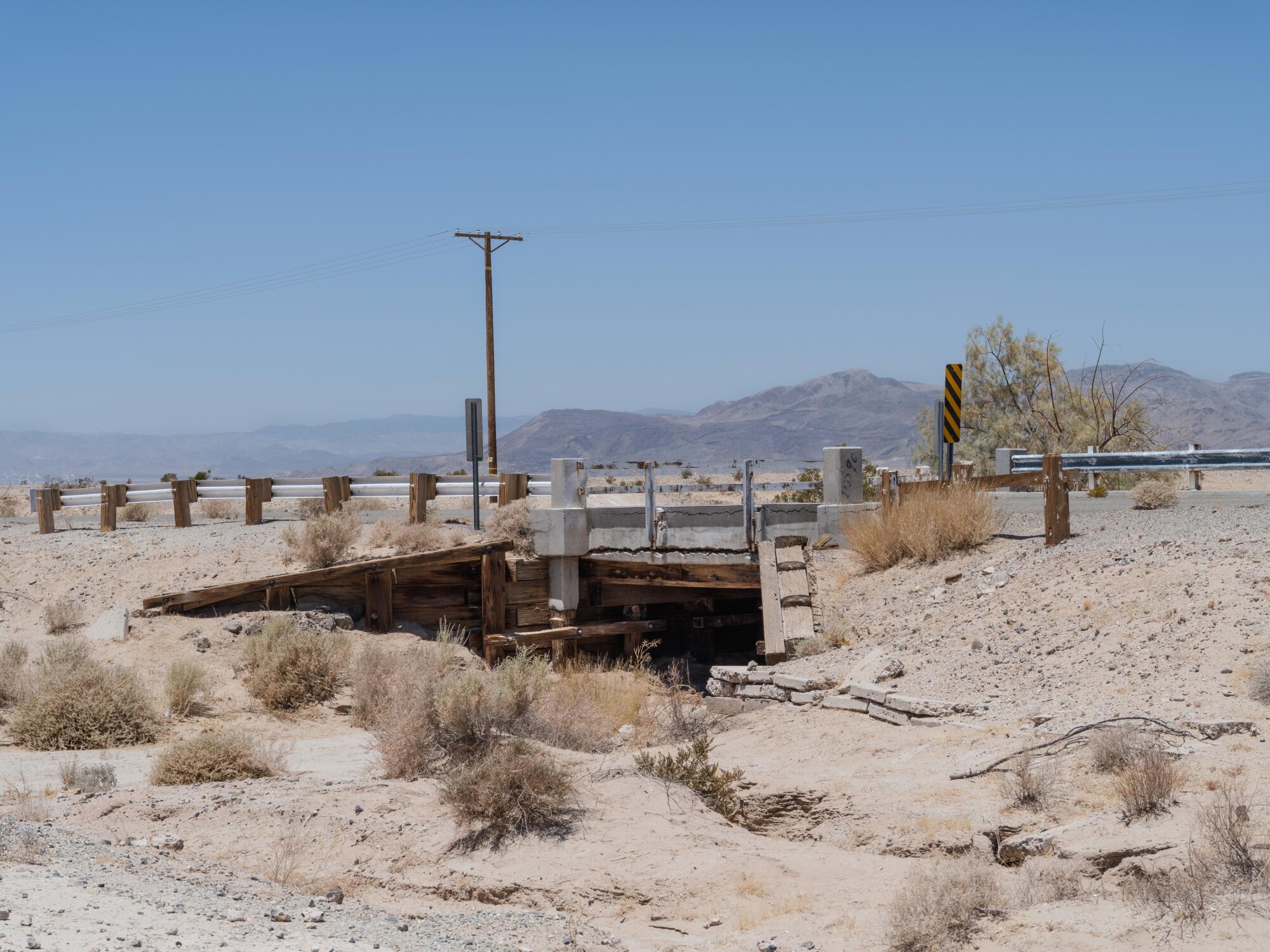
The border’s death toll is soaring for many other reasons: More people are coming, the border militarization budget keeps getting bigger, and President Biden’s new asylum restrictions motivate people to cross illegally. Last year, the U.S.-Mexico border became the deadliest land border in the world. At least 853 people died trying to cross, nearly triple the annual average since 1998, when Border Patrol began to record the deaths.
Experts believe the actual number is far higher. Most bodies are never recovered. Moreover, Border Patrol has been failing to collect and record all available data on deaths, according to a 2022 Government Accountability Office report.
Thousands of desperate migrants have died trying to cross the militarized U.S. border, but U.S. administrations refuse to change border strategies that drive these deaths.
In the absence of legal pathways like the European Union’s temporary protections for refugees, like those leaving Ukraine, people fleeing violence in Latin America or seeking to return to their relatives in the U.S. will continue to die by the “killing machine that simultaneously uses and hides behind the viciousness of the Sonoran desert,” writes Jason de León, an anthropologist at UCLA.
This machine is built with the desert’s furnace and the rising height of border walls, from which people fall and break their backs. It’s the rivers strung with barbed wire. It’s the border guards’ bullets, fired at innocent migrants.
Women are killed by the hundreds, but the majority of the machine’s victims are working-age men, often primary breadwinners like Jose Cervantes.
On July 8, his second day in the desert, he still couldn’t walk. But he called Reyna and reassured her that he’d make it to El Centro after sundown. He told her he thought it was two hours away. He just needed to rest a bit longer. He told her not to call him that night because Border Patrol agents might hear the phone. He’d contact her from the hotel.
On the morning of July 9, Reyna was in agony. She hadn’t heard from her husband. He wasn’t responding to her texts. From her job walking horses at a racetrack at 6 a.m. in Wilmington, Reyna called him. He picked up. She begged for news, but after a long silence, she heard only a slow and strange “Hola.”
Reyna broke into sobs. She knew he was in trouble. Jose was her best friend; she’d loved him since they’d met in Mexico when she was 16. They had matching “Cervantes” tattoos on their arms under their inked Zodiac symbols: he a Scorpio, she a Taurus. She cried and asked him questions. Finally, she heard a few slurred words: “I can’t walk. I can’t talk. I’m here, on top of the bridge. I’m waiting for somebody to give me a ride.”
These technologies are just as deadly as Trump’s wall — with greater potential for abuse.
She told me she felt desperate and unmoored. Back at home, she told her children what was happening; the two oldest, Ricky, 16 at the time, and Francisco, 19 then, said they’d use the family’s savings to fly west and find him. They called Border Patrol and told them their father was lost near El Centro. According to Border Patrol, agents initiated a search. But they didn’t trust agents to do a thorough search.
Last year, Border Patrol agents documented a record 22,014 migrant rescues. Nobody saves more migrants than the very border guards who chase them to their deaths. But agents don’t always search. A report by No More Deaths and La Coalición de Derechos Humanos found that in 63% of distress calls, Border Patrol didn’t conduct any confirmed search. Only 0.03% of the Border Patrol’s budget goes to the Border Patrol Search, Trauma and Rescue Unit, or BORSTAR.
The evening of her sons’ departure, after numerous calls for help, Reyna learned about San Diego’s “Armadillos,” one of several volunteer rescue and rescue groups that try to fill that gap. Reyna called them and told them her sons were going to California. Cesar Ortigoza, the group’s leader, said it wasn’t safe for her sons to search the desert alone. He and other volunteers would meet the boys in El Centro the next morning.
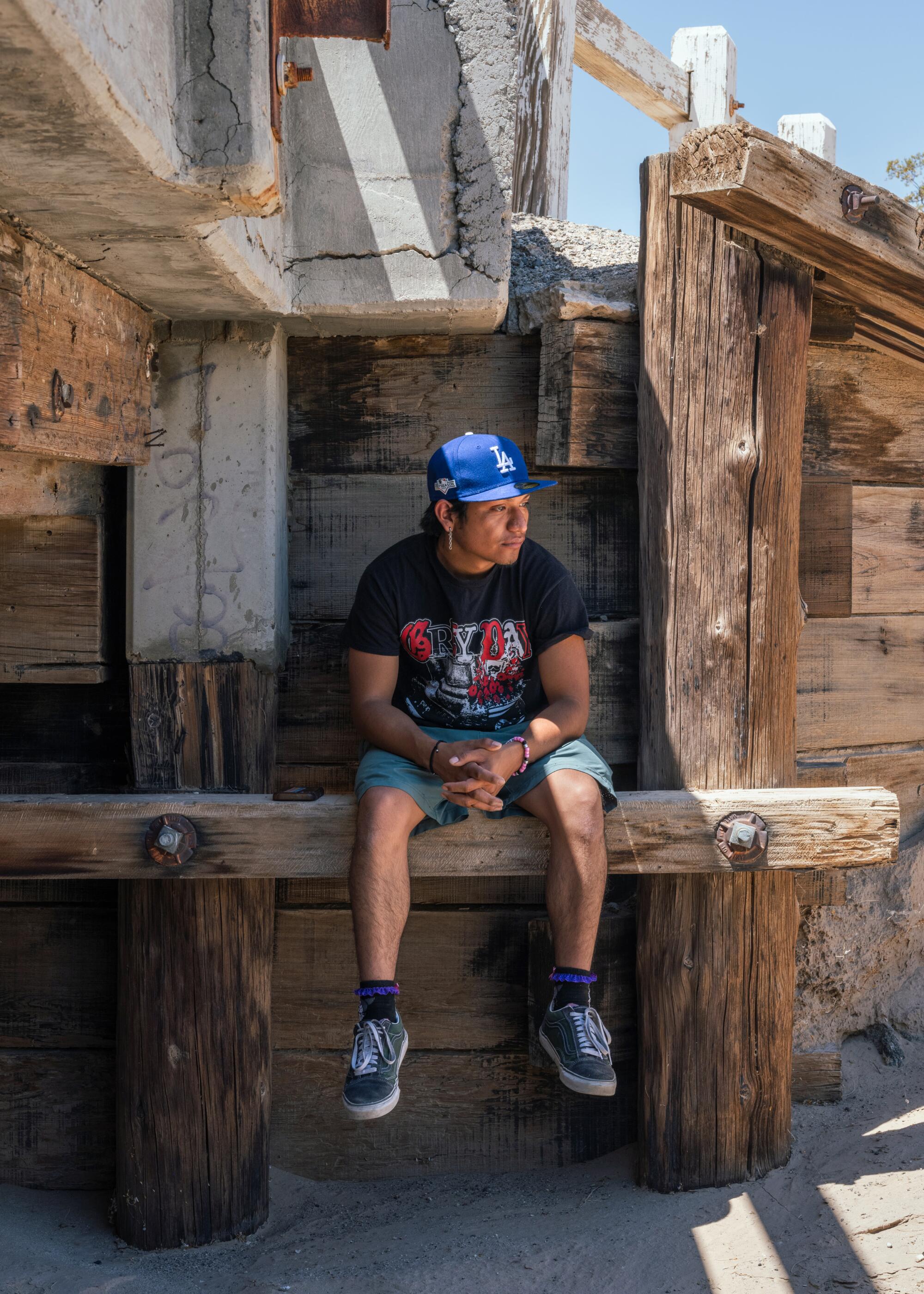
Starting early on July 10, Ricky and the volunteers searched bridge after bridge around El Centro. Francisco stayed in El Centro to keep contacting authorities. He called 911 requesting that his dad’s cellphone be pinged for a location; Border Patrol’s attempts failed, according to Imperial County dispatcher notes. Border Patrol initiated an “inactive search,” deciding not to deploy BORSTAR because they didn’t have an exact location.
Back home, Reyna, who doesn’t speak English like her son, called everybody she could think of for help: the Mexican consulates, relatives in Los Angeles, the smuggler, who was a family acquaintance. She called Jose, who was silent on the phone, and told him to hang on, help was on the way. Finally, she was able to reach the smuggler. She recalls him saying: He’s in Ocotillo. Hurry. He won’t last.
She called Ortigoza, and the rescue group sped to Ocotillo around sunset, sharing the new information with Border Patrol. They searched bridge by bridge near the desolate Evan Hewes Highway. After dark, the Armadillos saw a Border Patrol vehicle speed past with flashing lights, heading straight for a nearby bridge.
Under that bridge, at 8:48 p.m., agents found a man with a broken leg and head injuries, according to the dispatcher notes. Ten minutes later, they said he had no pulse. Paramedics arrived. The Armadillos got there. They were told to stand back. Ricky caught a glimpse of his father’s favorite pants, bleach-splotched jeans with colorful patches. The Border Patrol guards told him he couldn’t get any closer. Somebody declared forcefully that he had only recently died.
“My entire world was shattered there,” Ricky told me later.
For weeks, Reyna couldn’t get up from the couch where she’d sat during the search, she said. She couldn’t bear to go into her bedroom, where she felt her husband’s absence. She lost her job at the racetrack because five days of bereavement wasn’t enough to recover. Francisco and Ricky picked up more jobs to provide for the family. The whole family was struggling — with insomnia and other mental health issues.
No politician would suggest bombing U.S. corporations behind opioid-related deaths, but all top GOP presidential contenders endorse a counterterrorism operation against cartels in Mexico.
Meanwhile, priests, friends and strangers stopped by to drop off groceries. Somebody left a check for the month’s rent. When Reyna got the strength to restart the family’s mobile food business, people saw her grief and gave her $20, $50, or $100 bills for nothing.
Reyna remembered something Jose had once said, explaining why he gave to charity: “You’re not going to go poor by giving to others. God will reward you.”
Although Reyna couldn’t afford to send for Jose’s body after thousands of dollars were stolen by the smuggler, Border Angels, another San-Diego humanitarian nonprofit organization, paid for the body’s transfer to the family’s home in Delaware and some funeral expenses.
Reyna was grateful for the help of ordinary people, because she confronted negligence or worse in every government agency. She wanted to see Jose’s face. But his body had been stored improperly and she was told that it was too decomposed for an open casket funeral. The death certificate says he died of hyperthermia. But what of the injuries on the dispatcher notes? Did he hurt himself falling, or did somebody hurt him? Reyna is haunted by these questions. The coroner’s report remains open due to a backlog of cases in Imperial County. An incident report was never taken, according to the Sheriff’s Office.
Nevertheless, Reyna considers herself fortunate compared to others who lose loved ones to the border’s killing machine. Most bodies are lost forever, becoming bone fragments after animals eat and scatter them. Reyna has a grave site to visit. She stops there most days, on her way back from work. On special occasions, she hires mariachi bands to play him love songs. She posts pictures of him to her Facebook.
Guerrero: Want to stop immigration? Empower immigrants in the U.S. to help their families back home
Remittances are vital to many Latin American nations’ economies. A few policy shifts to increase the flow could do more good than another aid package.
Three years later, Reyna still stays in touch with the Armadillos, who periodically visit the site of Jose’s death to place flowers, Modelo Especial beers and other offerings at a memorial they made for him with a large wooden crucifix carved with his name. At the site, volunteers play Calibre 50’s “Te Volvería A Elegir,” which Reyna says she wants her husband to hear. “I’d choose you again,” the lyrics say in Spanish. One volunteer, Kari Frost, camped there one night to play guitar for Jose.
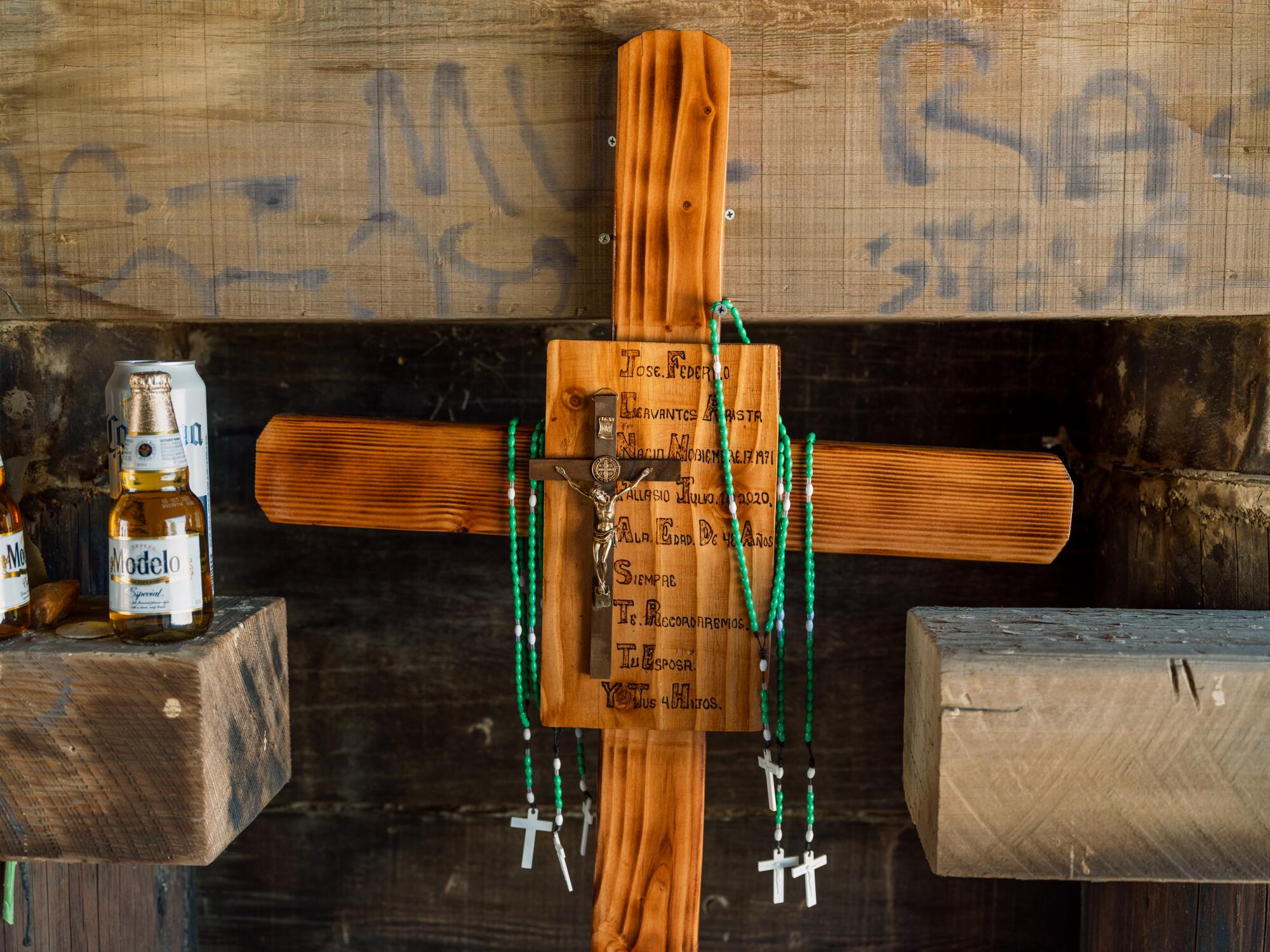
Reyna has kept the mobile food business going, but she has had to pick up other jobs to make ends meet, such as packing boxes at an Amazon warehouse. Ricky got a job at Amazon too, but injured his head on machinery there. He’s on worker’s compensation and taking a break from his college computer science studies until he’s recovered. He started having panic attacks after his father’s death, but listening to music keeps him going. So does his desire to live by his hardworking father’s example. Francisco got an IT job to help support the family. Their two younger siblings are in school.
For three years, Reyna has longed to see the place of her husband’s death, but she couldn’t go because she was undocumented and feared being detained at a Border Patrol checkpoint near the site. Now she has a pending immigration case seeking residency and cancellation of deportation because her fatherless U.S. citizen children need her here.
Last August, she received a temporary work permit while her case is being processed. It allowed her to make the trip. On July 8, just before the anniversary of Jose’s death, she flew to L.A. with Ricky and his teenage sister Juana. The Armadillos, led by Cesar Ortigoza, picked them up and drove them to Ocotillo.
They parked by the bridge. Reyna got out of the van first and walked straight under the bridge, ahead of everyone. When she reached the volunteers’ memorial, she fell to her knees and sobbed, clutching the sand. She slumped to the desert floor. She seemed to absorb the pain and anguish of Jose’s last moments, his longing for his family.
“I can’t walk anymore,” she cried. “My feet.” She wept for a long time, until her sobs slowly quieted. “I felt the release of a burden I had been carrying for three years,” she told me later, referring to guilt she felt at not finding him in time. “I felt as if something exited my body, and he was resting. ‘Finally. You came. You found me. You didn’t abandon me.’ I found him. I realized he never blamed me.”
She remained there for an hour and a half. Eventually, she sat up, wiping tears from her face. “Thank you,” she said to Cesar and Kari. “I needed to come for him. Now I know my husband will rest.”
The border machinery had killed Jose and devastated his family. It was the kindness of the border volunteers that allowed Reyna to feel some measure of peace.
More to Read
A cure for the common opinion
Get thought-provoking perspectives with our weekly newsletter.
You may occasionally receive promotional content from the Los Angeles Times.

